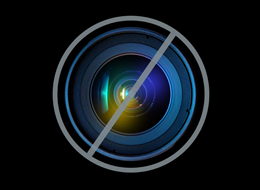by Joy Resmovits

Advocates, lobbyists and celebrities including Bill Cosby are rubbing shoulders in Minneapolis this week to celebrate 20 years of the charter school movement. But a report released late Tuesday confirms a flaw that charter critics have raised over the last two decades: charter schools don't enroll students with disabilities at the same rate as traditional public schools, despite federal laws that require all publicly funded schools to serve disabled students.
The Government Accountability Office report, commissioned by Rep. George Miller (D-Calif.), found that 11 percent of students enrolled in public schools during the 2009-2010 school year had disabilities, compared with 8 percent of students in charter schools. The report is the first to quantify this gap.
"We have known for several years that students for disabilities were underrepresented in charter schools," Jim Shelton, the U.S. Education Department assistant deputy secretary for innovation and improvement, told The Huffington Post. "The report puts a fine point on issues we were concerned about," said Shelton, the U.S. point person on charter schools. In a letter attached to the GAO report, Shelton wrote that the Education Department is working on new guidance to help charter schools meet federal standards for enrolling special-needs students. Shelton also noted that his agency's Office for Civil Rights is conducting four compliance reviews into charter schools that appear to have underserved students with disabilities.
While 34 percent of traditional public schools had populations with high concentrations of students with disabilities, only 23 percent of charter schools had similar compositions, the report said. To help explain the data, GAO investigators visited 13 charter schools and concluded "some charter schools may be discouraging students with disabilities from enrolling."
Charter schools originated in Minneapolis to increase flexibility in rigid public schools -- and to give students stuck in failing public schools an alternative that isn't determined by where they live. Charter schools receive public funding, but can be privately run by non-profit organizations and for-profit businesses. Unlike traditional public schools, charter schools can choose how to hire, fire, and pay their teachers, escaping union rules and school district regulations. They can also have more specialized curricula, extended hours and a longer school year.
More than 5 percent of America's school children now attend charter schools. All but nine states have laws allowing charter schools.
Charter school critics assert that rather than improving the overall quality of public education, charters create a two-tiered education system with different resources that cater to different populations. They have pointed to cases where charters allegedly discouraged the enrollment of special-needs students, or kicked them out once the school year started. The GAO report suggests that the number of special education students enrolled in charter schools may be lower because parents are drawn to traditional public schools with more resources for such kids. And, in some cases, state laws around charter-school funding might
The report comes as charter advocates edge into their third decade of operation, trying to convince politicians and school districts that the schools are worth the money. Advocates realize that in order to sustain that momentum, they need better results. While some charter schools perform exceptionally well on standardized tests, a steady trickle ofresearch has shown that overall, their students perform neither better nor worse than those in traditional public schools.
Miller told reporters that bipartisan charter school legislation the House of Representatives passed last year may help curb any discrimination.


